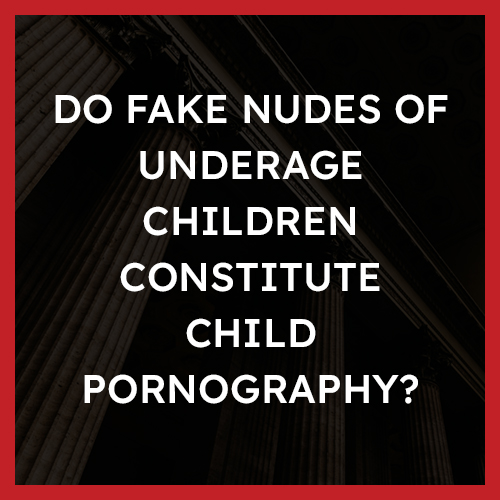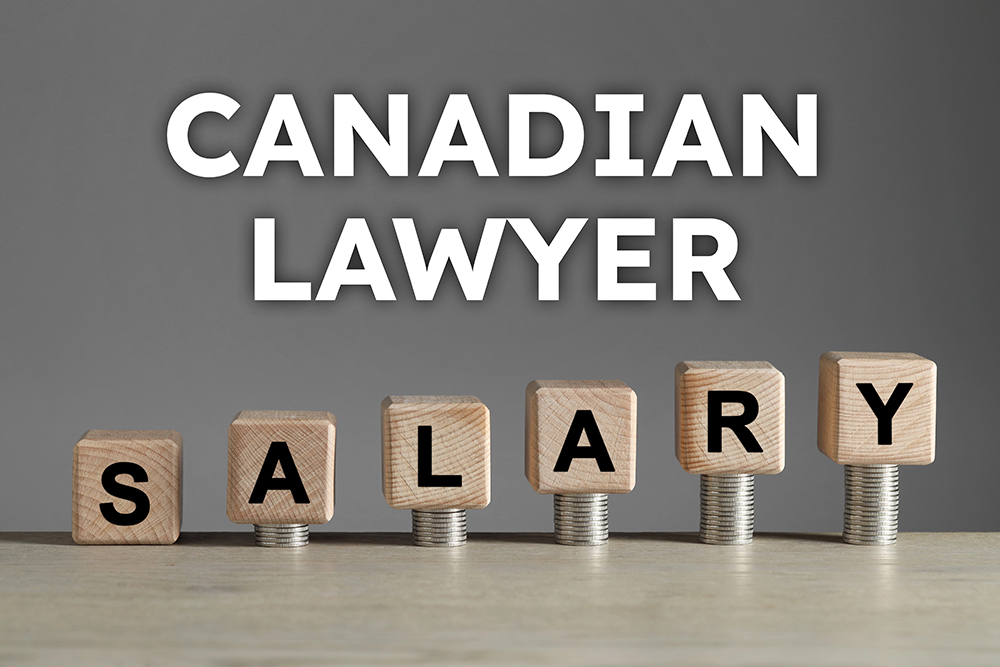Do fake nudes of underage children constitute child pornography?
What are fake nudes?

What is child pornography in the criminal code of Canada?
Child pornography is defined under section 163.1(1) of the Criminal Code, encompassing various forms of representation aimed at safeguarding children from exploitation. Child pornography includes photographic, film, video, or other visual representations – regardless of the method of creation – that either show or depict a person under the age of eighteen engaged in explicit sexual activity or emphasize, for a sexual purpose, the sexual organs or anal region of a person under the age of eighteen.
Additionally, child pornography extends beyond visual content to encompass written material, visual representations, or audio recordings that advocate or counsel sexual activity with a minor. This includes written material that describes, for a sexual purpose, sexual activity with a person under the age of eighteen or an audio recording whose dominant characteristic is the description, presentation, or representation, for a sexual purpose, of sexual activity with a person under the age of eighteen.
Do fake nudes of underage girls constitute child pornography?
The question of whether fake nudes of underage girls constitute child pornography involves a nuanced examination of the Criminal Code’s definition of child pornography. As discussed in the section above, child pornography encompasses various visual representations, irrespective of the means of creation, depicting individuals under the age of eighteen engaged in explicit sexual activity or emphasizing their sexual organs or anal region for a sexual purpose.
While the definition explicitly addresses photographs, films, videos, and other visual media, it does not expressly exclude digitally manipulated or generated images which would constitute fake nudes. However, in R.D. v G.S. the court found that transposing a child’s face onto a naked body qualified as child pornography. This precedent suggests that fake nudes featuring underage girls would likely be considered child pornography under existing legal interpretations.
What is the punishment for child pornography?
The Criminal Code delineates four principal offences falling under the umbrella of child pornography:
- Accessing child pornography;
- Possession child pornography;
- Distributing child pornography; and
- Making child pornography.
All four offences carry substantial maximum sentences, with distributing and making child pornography also subject to minimum sentences. Furthermore, if an offence is committed with the intent to make a profit, the sentence can be heightened.
Each category of child pornography comes with specific penalties:
- Making and distributing child pornography are categorized as straight indictable offences, entailing both a minimum and maximum jail term, with severity escalating.
- Possession and accessing child pornography are deemed hybrid offences, granting the Crown the option to proceed by way of indictment or summary offence. The choice between the two significantly impacts the severity of the imposed penalties, with indictment being the more severe option.
Given the gravity of these charges, a guilty verdict often results in a term of imprisonment ranging from 1 year to 14 years, contingent on the circumstances and the nature of the charge. Engaging the services of a highly experienced lawyer can profoundly influence the outcome of a potential term of imprisonment in the event of a conviction.
Across Canada, provinces and municipalities have dedicated sections of their police force to investigate and charge individuals suspected of engaging with child pornography.
This includes:
- The Internet Child Exploitation Unit (ICE) in Alberta integrates the RCMP, Calgary Police Service, Edmonton Police Service, Lethbridge Regional Police Service and Medicine Hat Police Service;
- The Internet Child Exploitation Unit (ICE) in Saskatchewan, which integrates the RCMP, Regina Police Service, Saskatoon Police Service and Prince Albert Police Service;
- The Integrated Child Exploitation Unit (ICE) in British Columbia; and
- The National Child Exploitation Crime Centre (NCECC) was formed by the RCMP to address the sexual exploitation of children Canada-wide.
What are the best defences to child pornography?
In general, effective defences against child pornography charges include:
Legitimate Reasoning & No Undue Harm:
Section 163.1(6) of the Code stipulates that if the material was produced for legitimate reasons related to justice administration, science, medicine, education, or art, and it does not pose an undue risk of harm to minors, conviction is not warranted. However, even with a legitimate purpose, a conviction can occur if the material poses undue harm.
Lack of Knowledge:
Arguing a lack of knowledge regarding the depicted person’s age is a common defence. Demonstrating that reasonable steps were taken to verify the person’s age can support this defence. Failure to do so, as per section 163.1(5) of the Code, can lead to conviction.
Lack of Control:
If charged with possession, asserting insufficient control over the content may be a defence. Contending that merely viewing content on the internet does not constitute possession can be an argument, although accessing child pornography may still lead to charges.
Innocent Possession:
Possessing child pornography solely to report it to authorities or destroy it can be a valid defence, challenging the mental element of the offence.
Private Use:
This defence applies if materials pose minimal risk to the child, depict lawful sexual activity with the consent of all parties involved, and are held for private use by the creator or participant.
Violation of Constitutional Rights:
Your rights under the Charter are crucial, and any breach by the police, such as an unlawful search and seizure, can be a strong defence. Successful challenges may result in excluding evidence, making it challenging for the Crown to prove the offence.
While the Crown shoulders the burden of proving the elements of the offence beyond a reasonable doubt, you, as the accused, must raise specific defences at trial. Child pornography prosecutions demand a high burden of proof, allowing for various successful defence strategies that experienced defence lawyers can deploy based on the unique circumstances of yo
Contact Us
If you have been charged with a criminal offence, visit our location pages to contact our team.
About The Author







